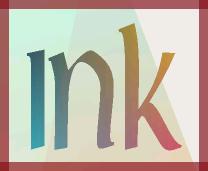|
SCOUG OS/2 For You - November 1998
Ok, back to real life analysis of the Lexmark Optra 40 Color Inkjet printer and how it really stacks up. First, Lexmark's claim of 8 pages per minute is a nice dream -- you know, economy mode, lots of white space and so forth. It is, in fact, about twice as slow as my HP1600CM at work on printing dense images. For example, a Paradox for Windows report in tabular format, compressed text, took 6 minutes to print the 13 pages, while the HP 1600 CM took only 3. This report is a listing of jazz albums, including artist, record name and subame, format and year. So my take is that for black & white printing, the Optra 40 isn't going to put real lasers out of business. On the other hand, the output is very crisp, waterproof, and exceedingly legible. I should also mention that a very significant difference between the two printers is that the HP has a max resolution of 300 dpi, while the Lexmark works at an honest 600 dpi -- I am sure accounting for some of the speed differences. Also, when it comes to Postscript Level 2 output such as printing a cover sheet with a large 1.2 Mb EPS image of the Los Angeles County Seal, the difference is all Lexmark. The HP1600CM will simply not print out the image, period. The Lexmark prints it without a hiccup, and a comparison of this output with that of my old reference HP4M Postscript printer is quite close, with perhaps a slight edge to the Lexmark for vividness of the black ink color. For printing out web pages, the HP and the Lexmark are comparable in quality and speed. Remember, of course, that these graphic images are not very high resolution or they'd take forever to load in your browser. When it comes to pictures, I have had time to run some tests using various papers on the Lexmark and on my Epson Photo 700, my current reference for color photo output for computers. Here, there are tradeoffs involved with cost vs. output quality. I took a number of different sizes/kinds of images and compared the output on Konica QP glossy stock for the Epson to medium weight (read much cheaper) Konica Glossy paper for the Lexmark. On 500K images (tif, jpg, gif) pushed to approximately 4"x6" output sizes, there was very little visible difference between the two printers on most images. On images with flesh tones, the 6 colors of the Epson made a difference on some images, but not all. On a landscape photo of about 16 MB, printed at 8x10", there was a very slight differnce in 'smoothness' of the Epson vs the Lexmark. What really suprised me was that the difference between software programs made a large difference in the final image. Using ColorWorks V2 on a science fiction jpg of about 1/2 meg, the color matching on the Epson was just about dead on, while on the Lexmark there was a slight banding. Changing to use PM View 1.02, both images seemed to be equivalent. On other images, there wasn't a discernable pattern I could find, but some images printed visibly different with the 2 programs. Mostly, the Epson takes the nod for consistency. At the same time the Lexmark was capable of very high control using the advanced postscript settings available only under ColorWorks V2. My conclusion is that color matching & output using the PC platform is simply not quite ready for prime time, and is as much art as science. If you really want dead on color matching between your scanner, monitor and printer, buy a Mac G3 with Quark For now, the Epson is still my favorite for photographs. For normal graphics and text with color, I'll take the Lexmark. It uses regular paper, seems to use less ink, and is faster. Of course, given some more time, who knows? I just bought a Photo cartridge, which swaps out for the Lexmark black ink cartridge, and gives true 6 color output. This may make the contest much more even.
Stay tuned.
By day, Tony Butka is a bureaucrat for Los Angeles County. In his other life he lives in a loft surrounded by computers, printers, and a host of vinyl records.
Copyright 1998 the Southern California OS/2 User Group. ALL RIGHTS
RESERVED.
SCOUG is a trademark of the Southern California OS/2 User Group.
|









